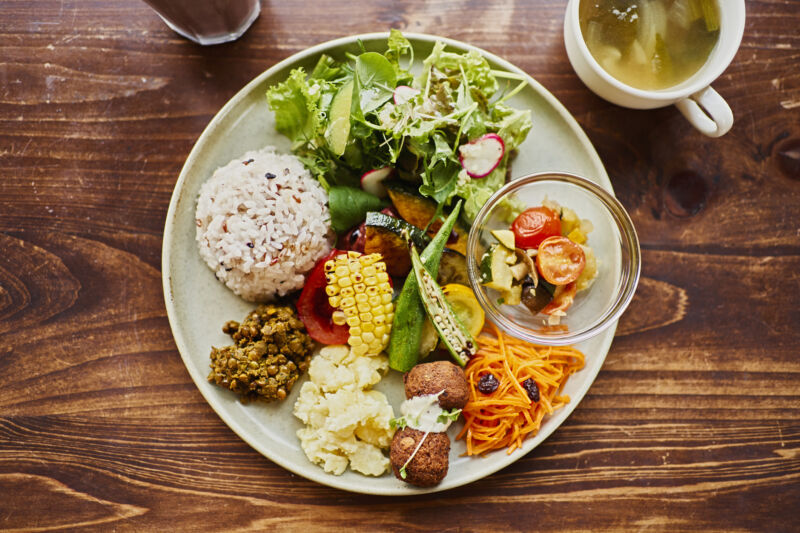
While it’s relatively straightforward to compare the environmental footprint of producing apples versus oranges (or even beef), these calculations become much trickier when foods contain multiple ingredients—and these make up the majority of what’s sold in a typical grocery store. Up until now, there haven’t been good methods to determine the impact of such foods, but a team at Oxford has recently published some of the first work toward developing a sustainability metric for everything (edible) one might find at their local grocer.
Beyond the approach’s sustainability estimates, the Oxford team went on to cross-reference its results with the standard nutrition metric NutriScore. With this, they found that there were many “win-wins” where foods were both sustainable and nutritious—although there were a few notable exceptions. And, while the results weren’t too surprising, this method offers a new metric for consumers, retailers, and producers to make more informed choices.
Secret recipes
One of the biggest hurdles to calculating the sustainability of multi-ingredient foods is that producers are rarely required to list how much of each ingredient they put into a product. Quite the opposite—these details are often closely kept trade secrets.
But in some countries, such as Ireland and the UK, at least some of this information is publicly accessible: the percentages of certain key ingredients. The researchers at the Livestock, Environment and People (LEAP) program and Oxford Population Health at the University of Oxford used these details (from the FooDB resource) to estimate the percentages of ingredients in similar products, including over 57,000 food products that represent nearly all of the foods and drinks in UK and Irish supermarkets.
Once they had estimates of the ingredients, they used the HESTIA environmental database to calculate the impact of the entire inventory. The team calculated an environmental score for each food that included a combined metric of four principle impacts—greenhouse gas emissions, land use, water stress, and the potential to cause toxic algal blooms in downstream bodies of water (i.e., eutrophication potential).
As a final step, they went on to cross-reference their sustainability results with the commonly used nutrition metric called NutriScore. This ranks food based on “good” nutrients, such as protein, fiber, fruit/vegetable content, and healthy oils, as well as “bad” nutrients like calories, fats, salt, and added sugar.
“We use NutriScore because it’s fairly widely used in many countries around the world and many researchers are familiar with the concept behind it,” said first author Michael Clark, at the University of Oxford. “The whole premise was developed to apply on a population level to result in better health outcomes. It’s gone through a lot of validation and testing and, on a population level, it has been very effective at that.”
Win-wins
When the researchers tested their method against products with known ingredients, they found that it performed well. The resulting sustainability rankings were also largely consistent with what would be expected given the main ingredients in any item.
“Our findings weren’t super surprising,” said Clark. “For at least the last decade, there’s been an increasing amount of evidence coming out saying that certain commodities have high impacts—generally beef and sheep—and certain commodities have low impacts, like plant-based foods (with some exceptions like chocolate and coffee).”
In general, meat, cheese, and fish—and anything made with these ingredients—had the highest estimated impacts. Anything based on fruits, grains, or vegetables ranked lower, as expected. When combined with NutriScore there were clear win-win products that were nutritious and good for the environment—like whole grain foods and produce. Potato chips also performed particularly well due to their high “vegetable” content. Other foods, like nuts, fish, and meat, were nutritious, but relatively harder on the environment.
Work in progress
The research team hopes that their work will be a starting point for a metric that could be used by consumers, producers, and retailers to make more sustainable choices. Moving forward, the biggest hurdle will still be the lack of ingredient transparency, which is unlikely to improve anytime in the near future. Where and how ingredients are produced is another factor that can considerably change the impact, and that is rarely disclosed.
“We’re hoping that this is the start of a longer journey and an opportunity to work together to develop something that’s mutually beneficial,” said Clark. “The most exciting part is the application of it—we now have a mechanism to allow for comparisons across a bunch of food products that people either produce, sell, or purchase, and this allows them to make informed decisions on the impacts of these choices.”
PNAS, 2022. DOI: 10.1073/pnas.2120584119








